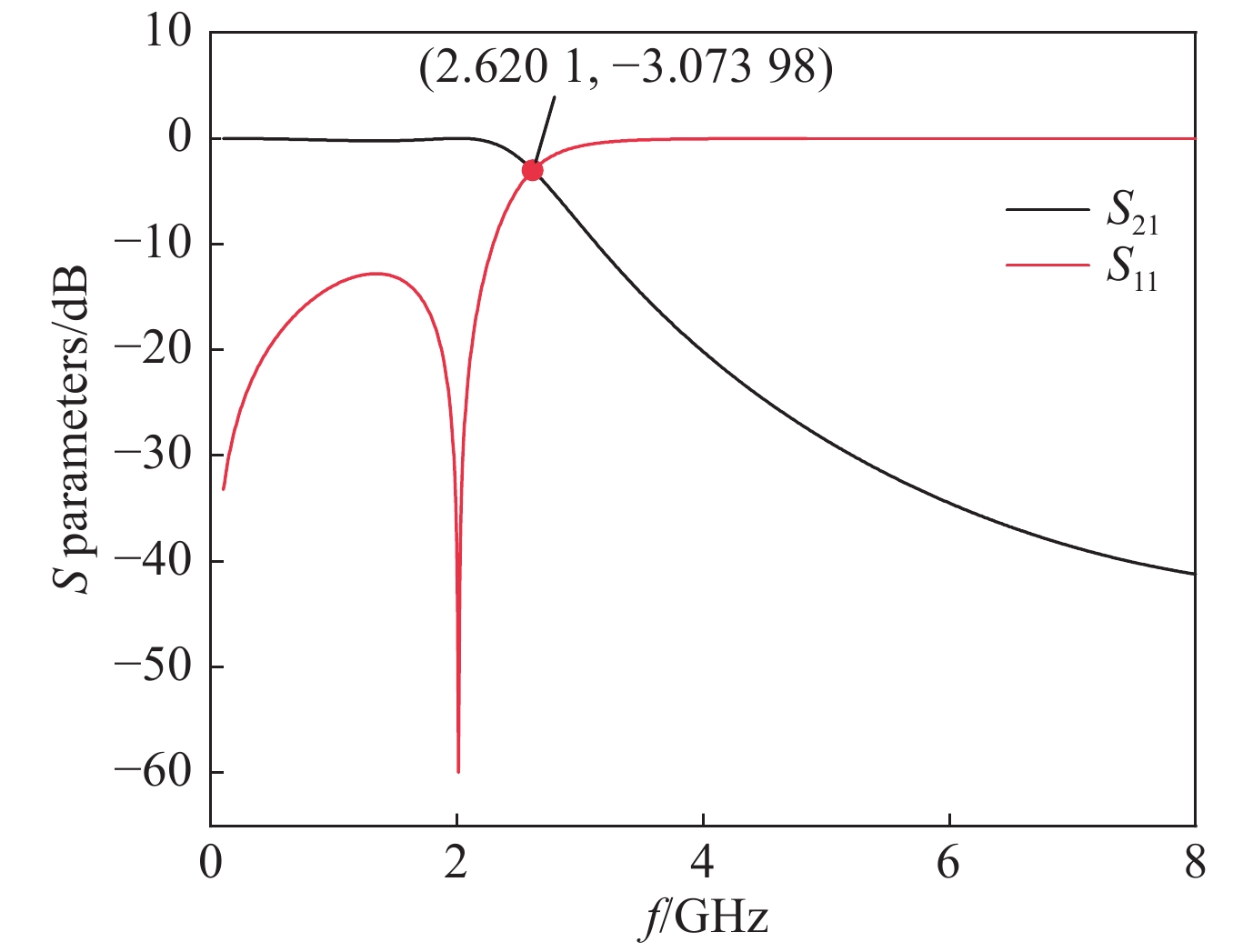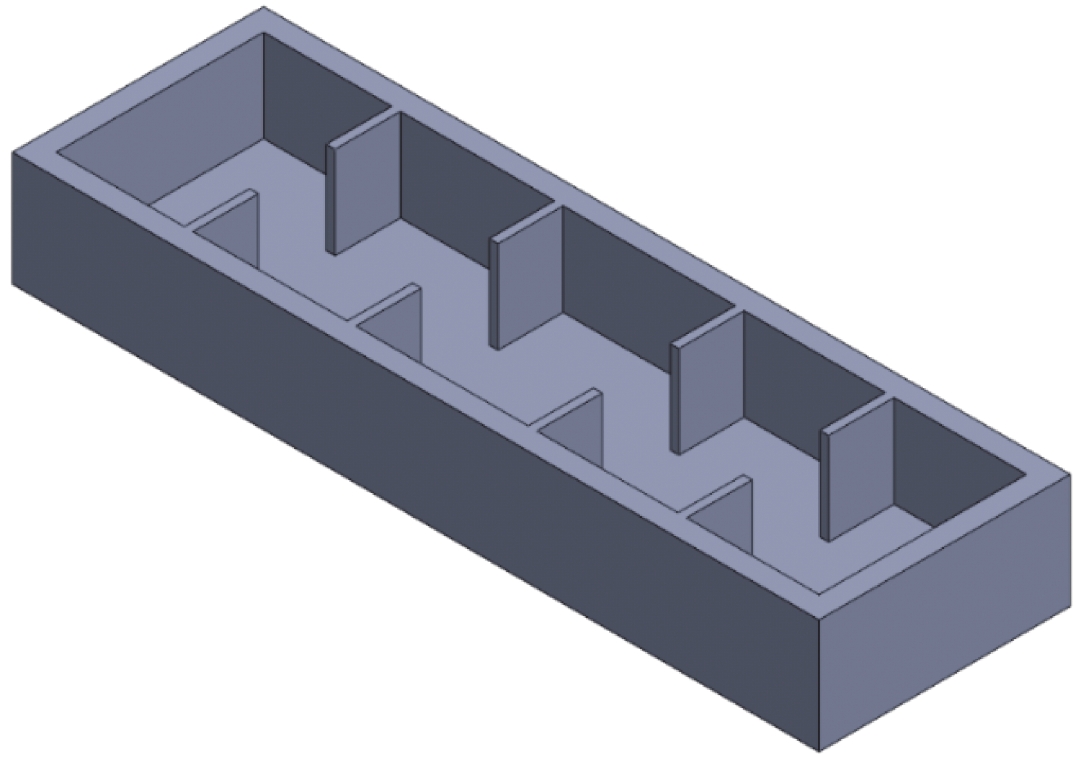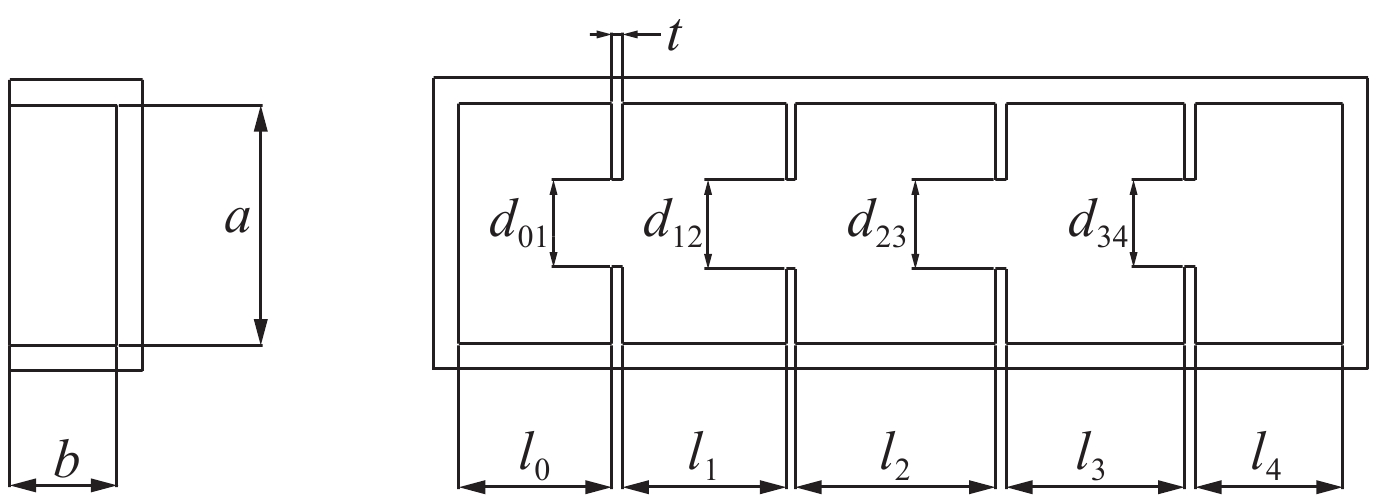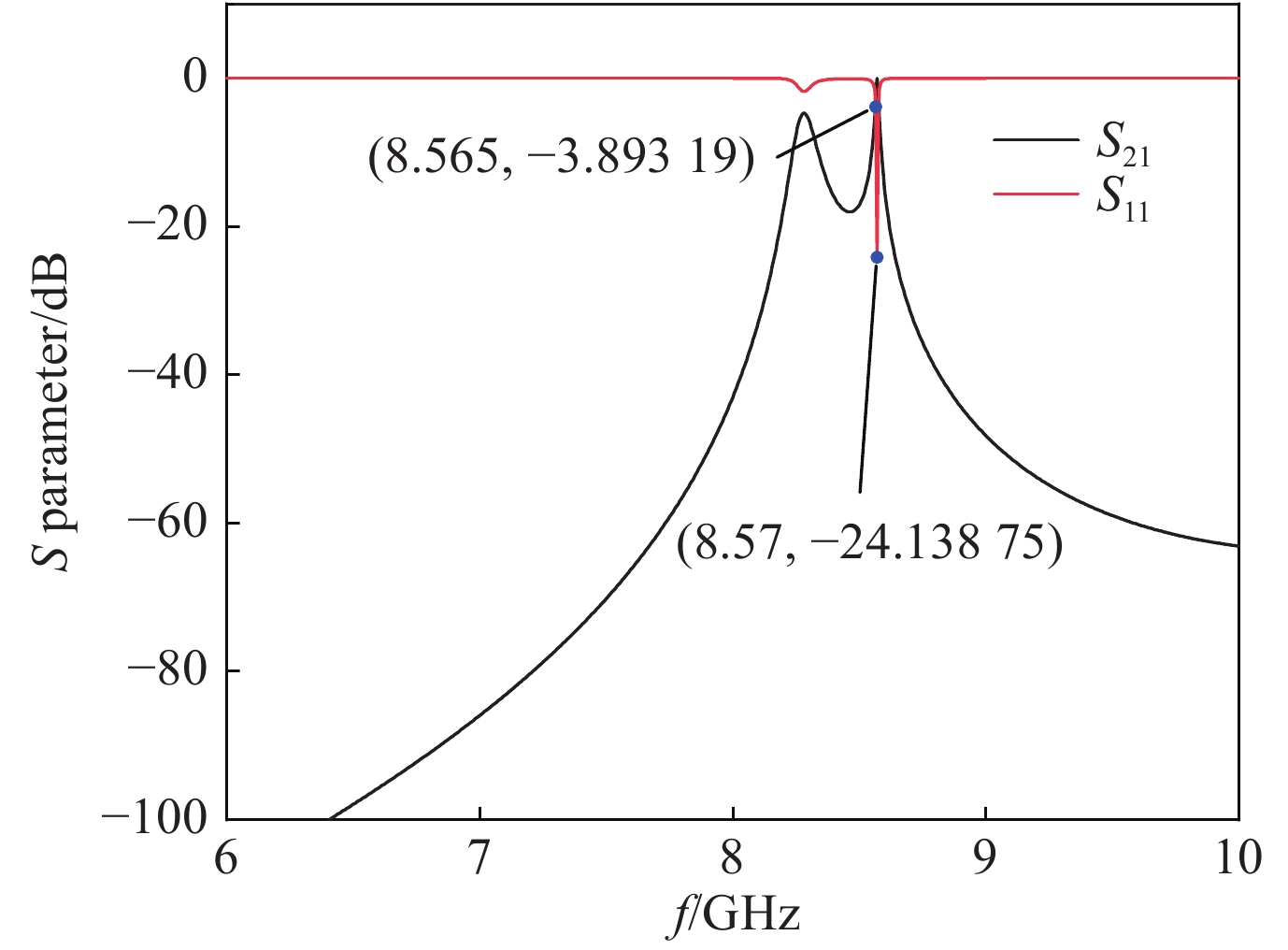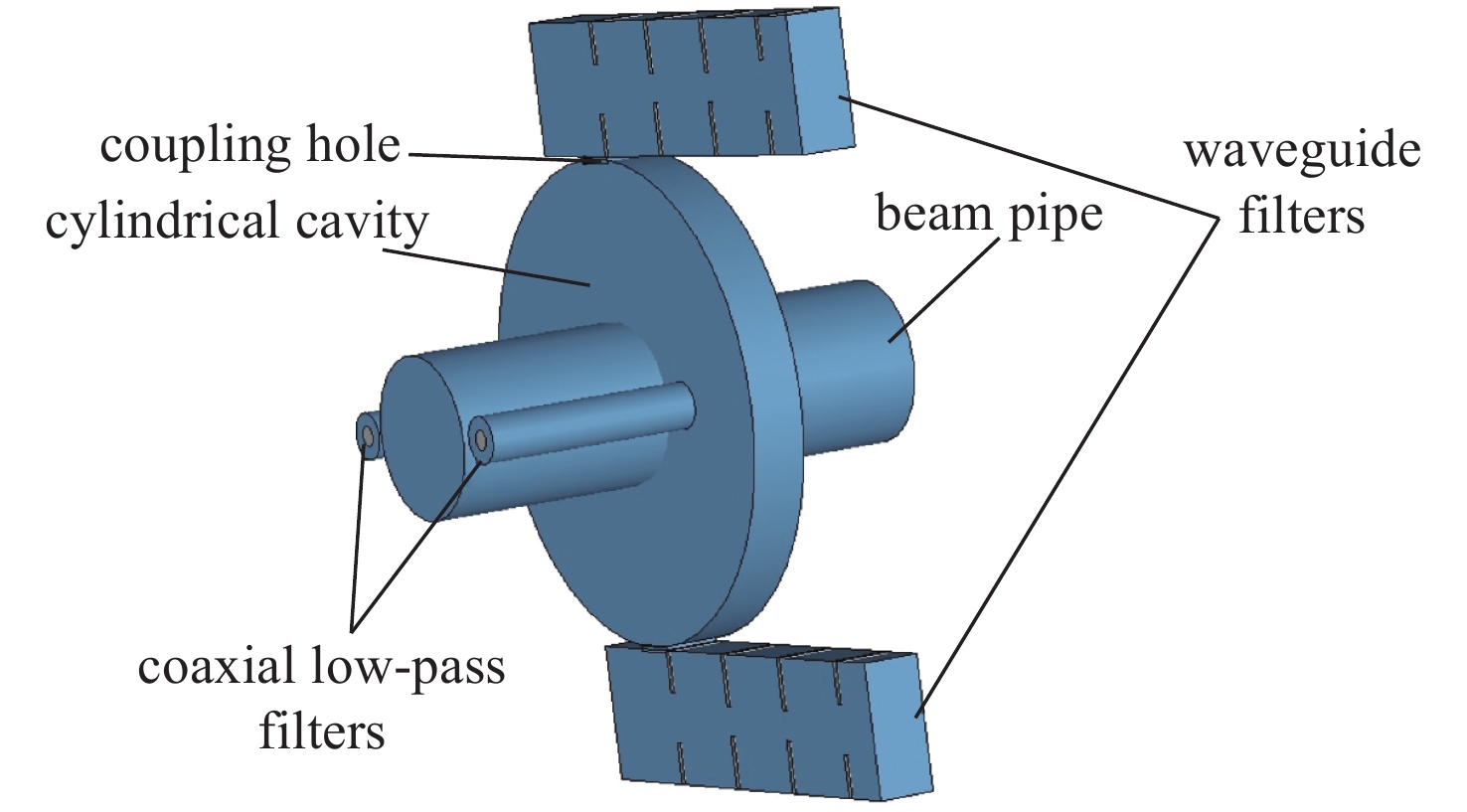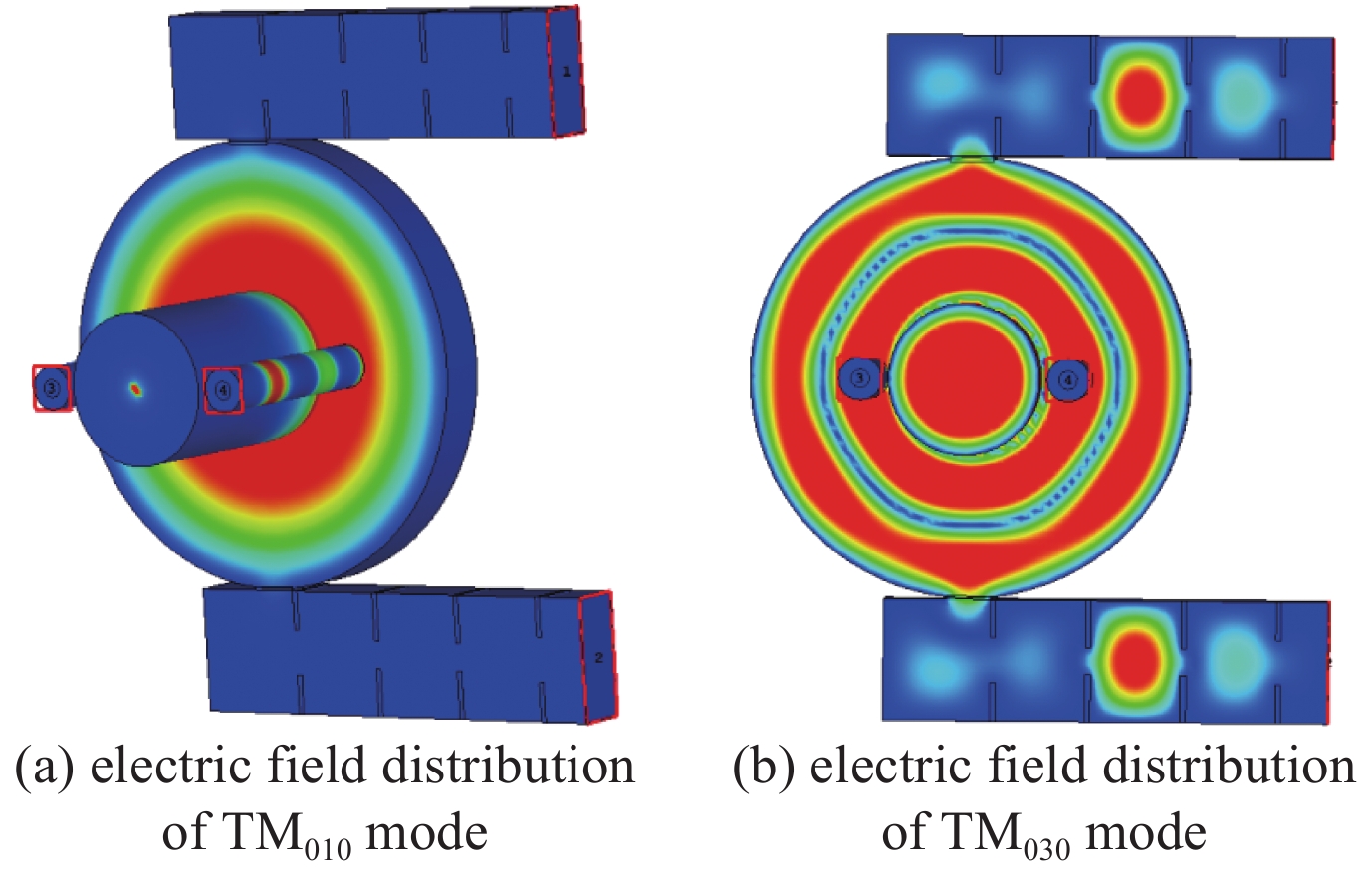Design and simulation of the coupler of single resonant cavity bunch length monitor
-
摘要: 单谐振腔束团长度监测器利用谐振腔内的两个本征模式测量ps量级的电子束团长度,它的关键是如何将两个不同频率的模式互不干扰地耦合提取出来。为解决这个问题,基于低通和带通滤波器的理论,提出了同轴滤波耦合结构和膜片加载波导滤波结构,借助CST微波工作室对滤波器进行建模并仿真得到其S参数。为测试耦合器的应用效果,设计了一套带有该耦合结构的单谐振腔束团长度监测器探头,根据国家同步辐射实验室基于可调谐红外激光的能源化学研究大型实验装置FELiChEM的束流特点,在CST内对所设计的探头进行束流模拟仿真。仿真结果表明,该耦合器可以实现对特定模式的耦合,并有效降低其它模式的干扰,采用同轴滤波耦合结构和膜片加载波导滤波结构的谐振腔监测器可以实现对FELiChEM装置束团长度的高精度测量,测量误差小于2 %。Abstract: The single-cavity bunch length monitor uses two eigenmodes in the resonant cavity to measure the bunch length in the order of picoseconds. The key is how to couple and extract two modes of different frequencies without interfering with each other. To solve this problem, based on the theory of low-pass and band-pass filters, a coaxial filter coupling structure and a diaphragm-loaded waveguide filter structure are proposed. The filters are modeled and simulated in CST Microwave Studio to obtain S parameters. In order to test the effect of the coupler, a bunch length monitor with the coupling structure is designed. According to the beam characteristics of the National Synchrotron Radiation Laboratory based on the tunable infrared laser energy chemistry research large-scale experimental device (FELiChEM), a beam simulation is performed on the designed monitor in CST. The simulation results show that the coupler can realize the coupling of specific modes and effectively reduce the interference of other modes. The resonant cavity monitor adopting the coaxial filter and the diaphragm-loaded waveguide filter can achieve high-precision measurement of the bunch length of the FELiChEM, and the measurement error is less than 2%.
-
Key words:
- resonant cavity /
- bunch length /
- filters /
- CST /
- beam /
- free electron laser
-
表 1 FELiChEM的束流参数
Table 1. Electron beam parameters of FELiChEM
energy/MeV energy spread/keV bunch charge/nC bunch length/ps micro-pulse repetition rate/GHz 25−60 <240 1.0 2−5 0.476 表 2 带通滤波器参数
Table 2. Parameters of band pass filter
d01/mm d12/mm a/mm b/mm l0/mm l1/mm l2/mm t/mm 10.54463 6.26978 28.499 12.624 15 21.19 22.47 1.2 表 3 束团长度仿真结果
Table 3. Simulation results of bunch length
bunch length/ps VTM010/10−7 VTM030/10−7 VTM010/VTM030 measured bunch length/ps relative error/% 2 2.175 0.966 2.251 2.03 1.50 3 2.174 0.959 2.266 2.99 0.33 5 2.168 0.937 2.313 4.91 1.80 10 2.147 0.840 2.557 9.93 0.70 15 2.116 0.700 3.024 14.94 0.40 20 2.074 0.542 3.828 19.97 0.15 -
[1] Li Heting, Jia Qika, Zhang Shangcai, et al. Design of FELiChEM, the first infrared free-electron laser user facility in China[J]. Chinese Physics C, 2017, 41: 018102. doi: 10.1088/1674-1137/41/1/018102 [2] 王岍. 基于谐振腔的直线加速器束团长度诊断技术研究[D]. 合肥: 中国科学技术大学, 2020Wang Qian. Study of the cavity-based bunch length diagnostic technology for linac[D]. Hefei: University of Science and Technology of China, 2020 [3] Chen Jian, Leng Yongbin, Yu Luyang, et al. Beam test results of high Q CBPM prototype for SXFEL[J]. Nuclear Science and Techniques, 2017, 28: 51. doi: 10.1007/s41365-017-0195-x [4] 曹珊珊, 冷用斌, 袁任贤, 等. 基于双腔探头的流强精确测量[J]. 核技术, 2019, 42:040101. (Cao Shanshan, Leng Yongbin, Yuan Renxian, et al. Study on precise bunch current measurement based on dual cavity monitor[J]. Nuclear Techniques, 2019, 42: 040101 doi: 10.11889/j.0253-3219.2019.hjs.42.040101 [5] 王岍, 罗箐, 孙葆根. 单谐振腔束团长度监测器的设计与仿真[J]. 强激光与粒子束, 2017, 29:115101. (Wang Qian, Luo Qing, Sun Baogen. Design and simulation of a bunch length monitor for linac based on single cavity[J]. High Power Laser and Particle Beams, 2017, 29: 115101 doi: 10.11884/HPLPB201729.170258 [6] Guo Jiang, Zhou Zeran, Luo Qing, et al. Design and simulation of TM020 cavity bunch length monitor[J]. High Power Laser and Particle Beams, 2016, 28: 095104. [7] 裴元吉. 电子直线加速器设计基础[M]. 北京: 科学出版社, 2013Pei Yuanji. Basics of electron linear accelerator design[M]. Beijing: Science Press, 2013 [8] Roberts B, Mammei R R, Poelker M, et al. Compact noninvasive electron bunch-length monitor[J]. Physical Review Accelerators and Beams, 2012, 15: 122802. doi: 10.1103/PhysRevSTAB.15.122802 [9] 甘本祓, 吴万春. 现代微波滤波器的结构与设计[M]. 北京: 科学出版社, 1973Gan Benfu, Wu Wanchun. The structure and design of modern microwave filter[M]. Beijing: Science Press, 1973 [10] Jarry P, Pham J M, Roquebrun O, et al. A new class of dual-mode asymmetric microwave rectangular filter[C]//IEEE International Symposium on Circuits & Systems. Phoenix-Scottsdale: IEEE, 2002. [11] Chen T S. Characteristics of waveguide resonant-iris filters (correspondence)[J]. IEEE Transactions on Microwave Theory and Techniques, 1967, 15(4): 260-262. doi: 10.1109/TMTT.1967.1126437 [12] 徐锐敏, 唐璞, 薛正辉, 等. 微波技术基础[M]. 北京: 科学出版社, 2009Xu Ruimin, Tang Pu, Xue Zhenghui, et al. Fundamentals of microwave technology[M]. Beijing: Science Press, 2009 [13] Wang Qian, Wu Y W, Luo Qing, et al. Design and simulation of the waveguide coupler for the cavity beam monitor[C]//9th International Particle Accelerator Conference. 2018: 4932-4935. [14] 崔艳艳. BEPCII直线加速器束团长度监测器研究[D]. 北京: 中国科学院高能物理研究所, 2007Cui Yanyan. Studies on bunch length monitor for BEPCII linac[D]. Beijing: Institute of High Energy Physics, Chinese Academy of Sciences, 2007 [15] 邹俊颖, 方佳, 孙葆根, 等. Libera Brilliance Single Pass束流位置处理器性能测试[J]. 强激光与粒子束, 2012, 24(12):2893-2896. (Zou Junying, Fang Jia, Sun Baogen, et al. Characterization test of Libera Brilliance Single Pass processor[J]. High Power Laser and Particle Beams, 2012, 24(12): 2893-2896 doi: 10.3788/HPLPB20122412.2893 期刊类型引用(12)
1. 周朴,常洪祥,粟荣涛,王小林,马阎星. 光纤激光相干合成的研究历程与发展趋势:基于文献引用的视角(特邀). 中国激光. 2024(01): 440-464 .  百度学术
百度学术2. 卞奇,薄勇,左军卫,彭钦军. 产生钠导引星星群的钠信标激光合/分束技术. 强激光与粒子束. 2023(04): 128-133 .  本站查看
本站查看3. 李博,陈胜平,李敬岁,宋家鑫,宋锐,韩凯. 线偏振超连续谱研究进展. 光学学报. 2023(17): 262-277 .  百度学术
百度学术4. 侯涛,张蓉竹. 影响偏振合成效率的主要误差分析. 光学与光电技术. 2019(03): 20-24+65 .  百度学术
百度学术5. 王彤璐,孙鑫鹏,李晔,史俊锋,张志强,李川,陈园园,韩松. 多孔径激光阵列光束排布模式及误差对相干合成效率影响的研究. 光学技术. 2019(05): 605-611 .  百度学术
百度学术6. 王桂霞,崔智勇. 基于激光雷达的机器人精准制孔控制系统设计. 激光杂志. 2019(10): 103-106 .  百度学术
百度学术7. 王铀,赵海,蔡庆春,范盟. 激光远程排弹研究现状与关键技术. 电光与控制. 2018(01): 60-64 .  百度学术
百度学术8. 侯涛,曹锋利,张蓉竹. 偏振误差对相干偏振合成效率的影响. 激光技术. 2018(04): 572-576 .  百度学术
百度学术9. 杨昌盛,徐善辉,周军,何兵,杨依枫,渠红伟,赵智德,杨中民. 大功率光纤激光材料与器件关键技术研究进展. 中国科学:技术科学. 2017(10): 1038-1048 .  百度学术
百度学术10. 李宏勋,张锐. 光纤放大网络及其应用研究进展. 激光与光电子学进展. 2017(01): 17-28 .  百度学术
百度学术11. 王小林,周朴,粟荣涛,马鹏飞,陶汝茂,马阎星,许晓军,刘泽金. 高功率光纤激光相干合成的现状、趋势与挑战. 中国激光. 2017(02): 9-34 .  百度学术
百度学术12. 周朴. 高平均功率光纤激光技术基础:(1)概述. 强激光与粒子束. 2017(10): 7-12 .  本站查看
本站查看其他类型引用(14)
-






 下载:
下载:


